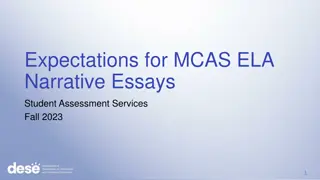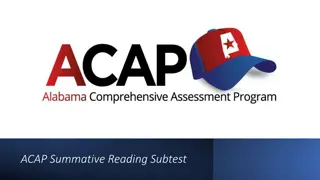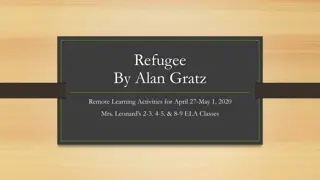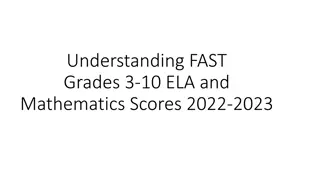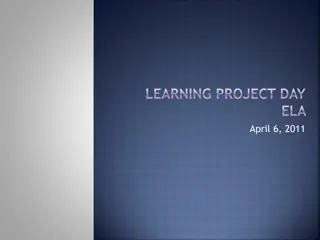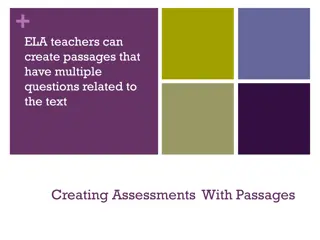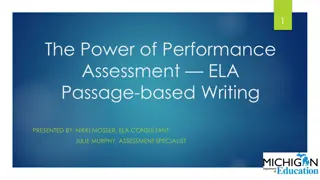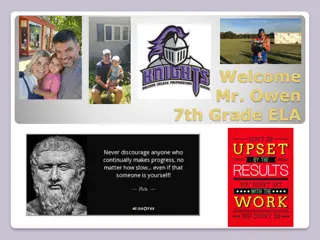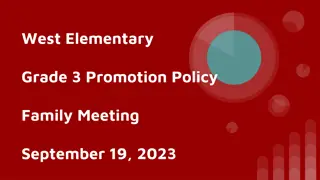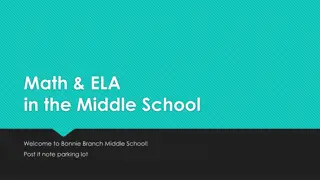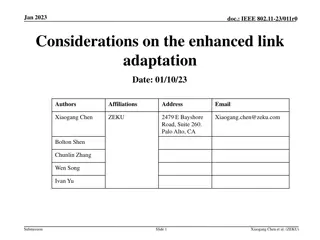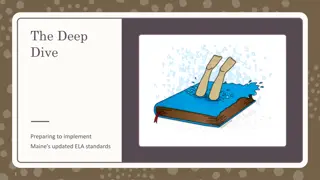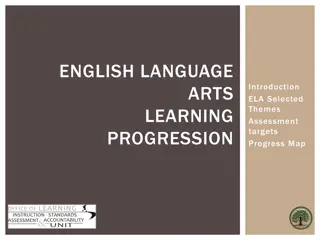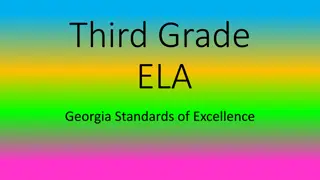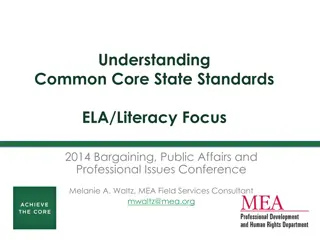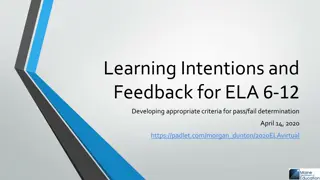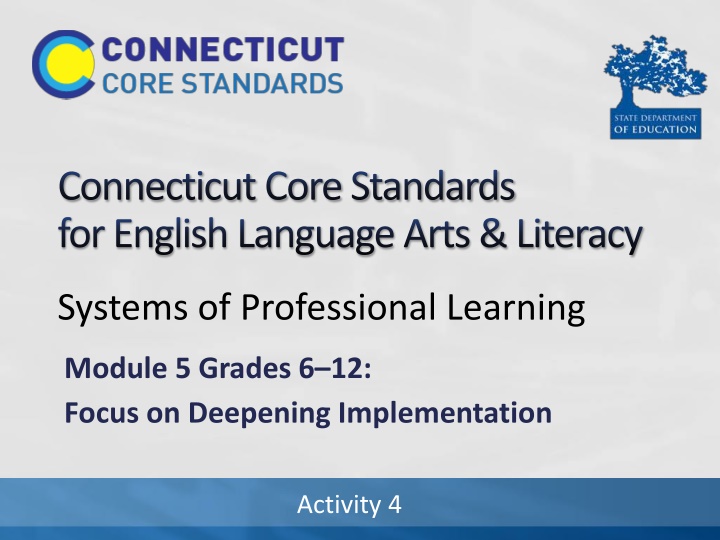
Deepening Implementation of Connecticut Core Standards in ELA & Literacy
Explore activities such as collaborative examination of student work and the EQuIP Student Work Protocol to enhance understanding and implementation of the Connecticut Core Standards for English Language Arts & Literacy in grades 6-12. Engage in evaluating student work, gaining insights into standards alignment, and fostering teacher learning through assessment practices.
Download Presentation

Please find below an Image/Link to download the presentation.
The content on the website is provided AS IS for your information and personal use only. It may not be sold, licensed, or shared on other websites without obtaining consent from the author. If you encounter any issues during the download, it is possible that the publisher has removed the file from their server.
You are allowed to download the files provided on this website for personal or commercial use, subject to the condition that they are used lawfully. All files are the property of their respective owners.
The content on the website is provided AS IS for your information and personal use only. It may not be sold, licensed, or shared on other websites without obtaining consent from the author.
E N D
Presentation Transcript
Connecticut Core Standards for English Language Arts & Literacy Systems of Professional Learning Module 5 Grades 6 12: Focus on Deepening Implementation Activity 4
Todays Session CCS-ELA & Literacy Successes and Challenges Supporting Teachers in the Change Process EQuIP Quality Review Rubric Collaborative Examination of Student Work Classroom Look Fors Reflection and Planning 44 Activity 4
Part 4 Collaborative Examination of Student Work from Performance Tasks Page 20 45
Collaborative Examination of Student Work To what extent, and for what purposes, do you and your colleagues currently engage in collaborative examination of student work? 46 Activity 4
Teacher Learning through Assessment Past experience suggests that teachers involvement in developing, scoring, and analyzing the results of performance-based student assessments in the CCSS could be a powerful opportunity for teachers to learn about the standards, their students, and their teaching practice. Darling-Hammond & Falk (2013) 47 Activity 4
Benefits of Examining Student Work from Performance Tasks Teachers Evaluate student work based on evidence Deepen knowledge of their own discipline See how the big ideas of standards play out in student work Develop shared understanding and common language Gain understanding about quality assessment Learn importance of making learning goals and success criteria clear for students 48 Activity 4
EQuIP Student Work Protocol The specific objectives of this EQuIP Student Work Protocol are three-fold: 1. To confirm that a lesson s or unit s assignment is aligned with the letter and spirit of the targeted Core Standards 2. To determine how students performed on an assignment as evidence of how well designed the lesson/unit is 3. To provide criterion-based suggestions for improving the assignment and related instructional materials http://achieve.org/EQuIP 49 Activity 4
ModifiedEQuIP Student Work Protocol For today s activity: 1. Scoring scales have been eliminated 2. Some questions have been eliminated from the original 3. Other questions have been added to address coaching feedback for teachers 50 Activity 4
Activity 4: Collaborative Examination of Student Work Activity 4: Examining Student Work from a Performance Task 1. Form a group of four participants. 2. Select a facilitator and recorder. 3. Complete the following steps in the protocol, using the template: Focus on the assignment itself and analyze purpose and demands without consulting the standards. Analyze targeted standards and identify gaps in alignment. Describe how students performed on the assignment and if they met the expectations of targeted standards. Provide criterion-based feedback regarding assignment and instruction. Page 20 51 Activity 4
Reflection on Examining Student Work What benefits might there be in examining student work from units, lessons, and performance tasks? How might collaborative examination of student work provide opportunities for CT Core Standards-aligned coaching? Curriculum design Instruction 52 Activity 4
Teacher Learning through Assessment Teacher involvement in the design, use, and scoring of performance assessments has the potential to powerfully link instruction, assessment, student learning, and teachers professional development. If used wisely, it has the potential to address multiple important goals through one concentrated investment. Darling-Hammond & Falk (2013) 53 Activity 4

